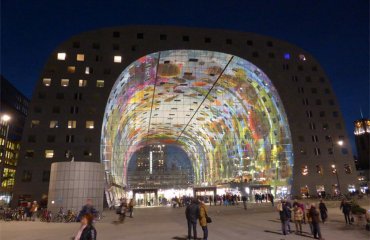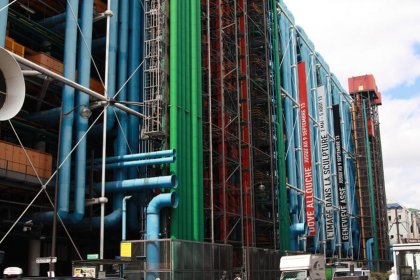
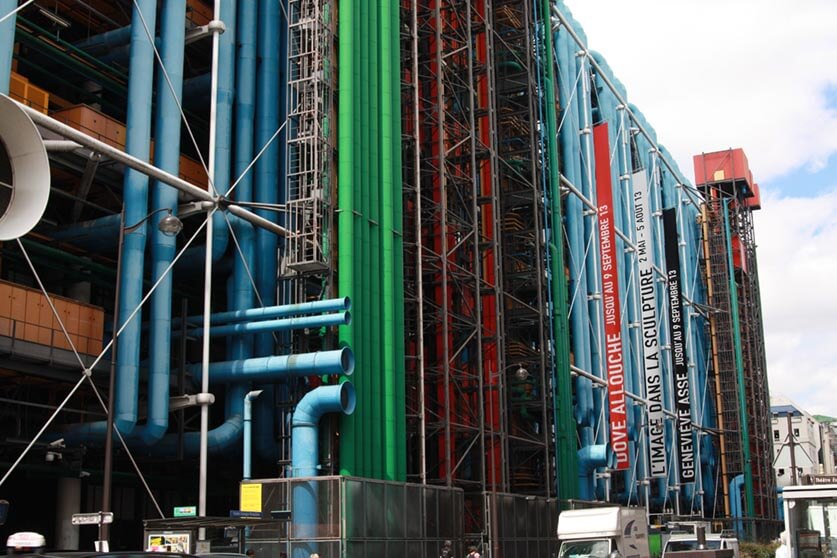
"Pompidou" by Fernando is licensed under CC BY-SA 2.0
The Centre Georges Pompidou in Paris, France is a unique building. On first glance you can see what is unusual about it, all of the infrastructure is actually located on the outside! This was done to allow for large open spaces inside the Pompidou (totaling over 1 million square feet), which houses modern art as well as a library and music research center.
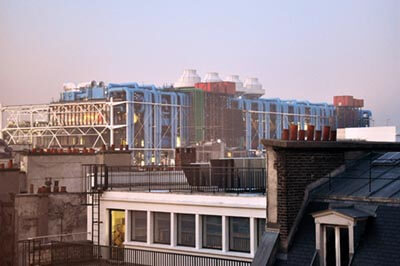
"Beaubourg / Pompidou" by Céline Harrand is licensed under the public domain
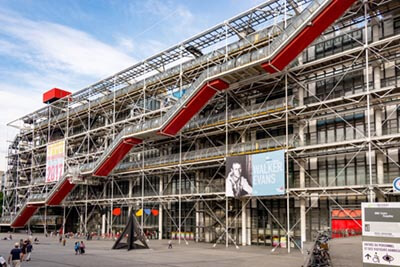
"58595-Paris" by Xiquinho Silva is licensed under CC BY 2.0
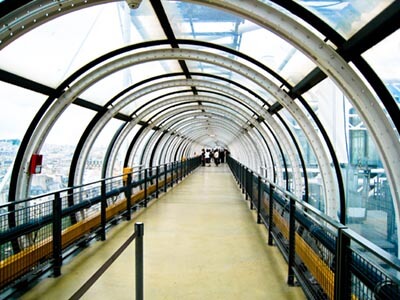
"Tunnel at the Pompidou" by Sharon Mollerus is licensed under CC BY 2.0
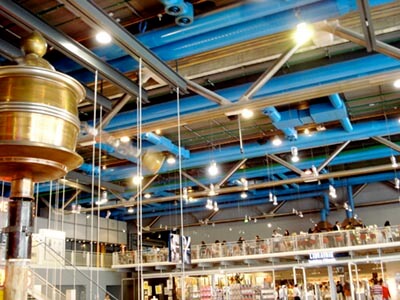
"Interieur G Pompidou" by Carles Tomás Martí is licensed under CC BY 2.0
Interestingly, the infrastructure elements are color coded so you can tell exactly what they are. White elements are structural and large ventilation components, silver gray is for stairs and elevator structures, blue is for the other ventilation components, green is for plumbing and fire control piping, yellow and orange are for electrical, and red is for elevator motor rooms, shafts, and components which allow movement.
Architects Renzo Piano and Richard Rogers, now prominent in the profession, were unknown when the competition for entries was held. Their surprising design won over about 680 other entries from around the world, including some famous French architects. In their design, they wanted to incorporate current technology and do something different. Some of their ideas such as moving floors and outdoor screens did not make it to the completed building. However, it still remains a landmark structure that is one of the most well-known buildings of all time.
Looking at the Pompidou in the context of its surroundings, it certainly stands out. In an entertaining anecdote, Rogers relates a time when a local Parisian woman struck up a conversation with him while standing outside. When she asked him what he thought of the Pompidou, he replied that he designed it, she, in turn, responded by hitting him on the head with her umbrella!
Critics delivered harsh words about the design before opening and since. The building has had a mixed response with the public as well but the numbers don’t lie! It is the third most visited attraction in Paris and has received about 150 million visitors since opening in 1977. The open piazza allows ample room for people to meet. Height restrictions in the area allow the Pompidou to rise above its neighbors, affording visitors a panoramic view. The unique and interesting “caterpillar” transparent escalator zig-zags up the side of the building. It was even featured in the 1979 James Bond film, Moonraker.
In recent years, the Louvre and Musée d’Orsay saw a decline in the number of visitors, however, the Pompidou saw a 9% increase in attendance. Which could be in part due to the nature of the collections, the library and music research center are not dependent on tourists.
There is another interesting Pompidou location in Metz, France. Additional centers are set to be opened in Spain and Mexico.
An upcoming two-year renovation project will perform necessary maintenance to ensure this fascinating building can continue to intrigue visitors for years to come.
Check out my post on the Centre Pompidou Metz here or discover another crazy building here!



